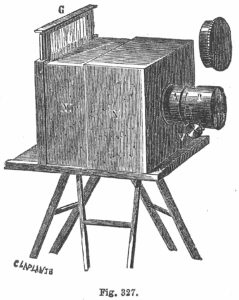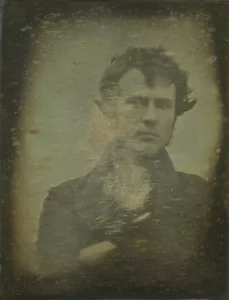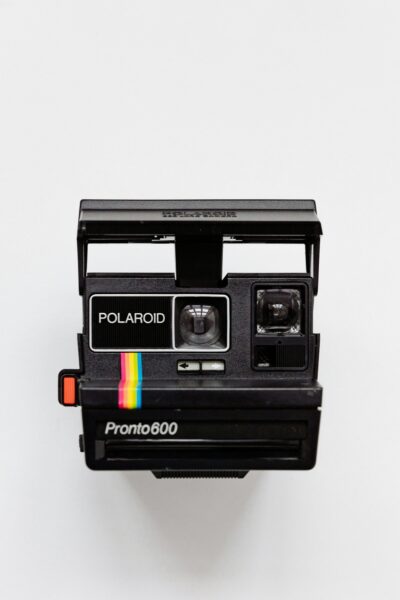The History of Portrait Photography and Its Evolution Over the Years
In this article :
Portrait photography, often seen as a mirror of the soul, holds a central place in the history of photography. Since its emergence in the 19th century, it has evolved alongside technological advancements and cultural shifts. Initially reserved for the elite, this art form gradually became more accessible, allowing a wider audience to capture moments of life and create lasting visual memories.
In this article, we will explore the key stages in the evolution of portrait photography, highlighting the techniques, styles, and iconic figures that have shaped its history. We will also examine how the arrival of digital photography has transformed the practice.
The Beginnings of Portrait Photography
The Daguerreotype
In 1839, Louis Daguerre introduced the daguerreotype to the world, the first viable photographic technique. This method involved capturing images on silver-coated copper plates, delivering exceptional definition for its time. However, the process was lengthy and expensive. Portraits were taken in specialized studios and required long exposure times, making the experience uncomfortable for the subjects.
One of the earliest known photographic portraits is that of Robert Cornelius, taken in 1839. This image marks the beginning of a long tradition in which photography became a way to capture human personality and emotion.
 Schematic view of a daguerreotype camera (Wikipedia)
Schematic view of a daguerreotype camera (Wikipedia)
 Portrait of Robert Cornelius, 1839 (image libre de droit)
Portrait of Robert Cornelius, 1839 (image libre de droit)
The Popularization Through the Wet Collodion Process
In the 1850s, the invention of the wet collodion process by Frederick Scott Archer revolutionized photography. This method made it possible to produce prints on paper, significantly reducing both cost and production time. Portrait photography then became accessible to a wider clientele, establishing itself as a favored way to create visual keepsakes, especially during historical events such as the American Civil War.
Technical and Stylistic Sophistication (1870–1940)
The Rise of Lighting and Composition Techniques
With the advent of artificial lighting in the 1870s, photographers gained greater control over their shots. Studios were equipped with sophisticated tools to manipulate light and highlight the subjects’ features. Photographers like Julia Margaret Cameron pioneered expressive poses and artistic blur effects, leaving a lasting impact on the art of portrait photography.
 Portrait of Cameron Julia Jackson, niece of the photographer (wikipedia)
Portrait of Cameron Julia Jackson, niece of the photographer (wikipedia)
Reflex Cameras and Interchangeable Lenses
The arrival of reflex cameras in the 1920s allowed for better visualization of compositions before shooting. Combined with the introduction of interchangeable lenses, these innovations opened up new creative possibilities. Photographers could vary focal lengths to capture intimate portraits or wider shots, thereby enriching their artistic palette.
The Digital Era
Instant Photography and the Rise of Digital Cameras
In the 1950s, the introduction of Polaroid cameras transformed the photographic experience. Instant images offered immediate gratification, further popularizing photography. This revolution was amplified by the emergence of digital cameras in the 1990s, which brought unmatched flexibility. Photographers could now edit their shots directly on a computer, paving the way for endless creative possibilities.
 Appareil Polaroid Pronto 600 (1980)
Appareil Polaroid Pronto 600 (1980)
Smartphones and Photography for All
The 21st century saw the explosion of photography through smartphones. Equipped with increasingly powerful sensors, these devices made portrait photography accessible to billions of people. Social media platforms, such as Instagram, also played a central role in the widespread dissemination of portraits, redefining the aesthetic codes of the image.

Iconic Portraits and Major Figures
Pioneers and Visionaries
Among the photographers who have shaped history are:
- Julia Margaret Cameron, a pioneer of emotional portraits and artistic blurs.
- Edward Weston, a master of minimalist compositions and textures.
- Annie Leibovitz, renowned for her bold celebrity portraits.
Current Trends
Today, photographers like Tyler Mitchell are redefining portrait photography by blending activism and aesthetics. His iconic 2018 portrait of Beyoncé for Vogue embodies this new era where portraits become tools for cultural and social storytelling.
Conclusion
Portrait photography, constantly evolving, remains a cornerstone of personal and professional communication. At Rétines, our expertise in corporate photography helps you create portraits that reflect your company’s identity and values.
Need a professional portrait? Contact us to enhance your image.
Jérémy Carlo is the editorial director at Rétines, where he ensures the consistency and clarity of all content produced by the studio.
Our Clients
Let’s discuss
What we do for you at Rétines
Meticulous work, an organised project and fast delivery. And to achieve this, we mobilise the right resources in our teams at the right time.
01
Pre-production
Artistic and technical direction tailored to the project.
Relevant recommendations on content, form and resources.
02
Photo Shooting
Photos taken by our experienced photographers.
Production that’s controlled, efficient and tailored to the needs of the project, with nothing superfluous.
03
Retouching
Technique
Photographs magnified by our retouching team.
Post-production to meet the commercial challenges of the brief.












